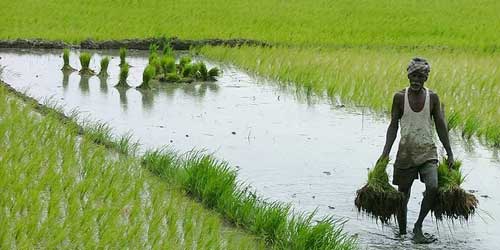
A number of agricultural scientists have attempted to delimit agricultural regions of India using a variety of criteria. One of the popular schemes provided by the Randhawa is briefly outlined here.
- Temperate Himalayan Region: Due to climatic and accompanying variations in corps this region is further divided into two sub-regions.

- The Eastern Himalayan Region: This Agricultural Regions of India is wet and the rainfall here is more than 250 cm. including upper Assam, Sikkim, and Mishmi Hills, this region is largely covered by forests. Tea plantations on hills slopes and paddy cultivation in low-lands are the major agricultural activities.
- The Western Himalayan Region: Western Himalayan Region is climatically dry and this includes Kulu, Kangra and Kashmir Valley, and Garhwal, Kumaon, and Shimla hills. Horticultural crops of apples, almonds, and apricots are important in the highland areas. In relatively lower parts and on gentler slopes are cultivated the crops such as potato, maize, and paddy.
- Northern Dry Region: This region has a rainfall of less than 75 cm and the soils are alluvial and sandy. Punjab, Haryana, Delhi, Gujarat, Rajasthan, Uttar Pradesh and western Madhya Pradesh are included in this region. Wheat, maize, and cotton are the chief crops. Sugarcane and rice are grown in irrigated areas.
- Eastern Wet Region: This is the area of more than 150 cm of rainfall. The soil is alluvial in some parts and deltaic in others. This region includes West Bengal, Orissa, Bihar, Jharkhand, Andhra Pradesh, Tamilnadu, Chhattisgarh and the states of the North-East including Assam, Meghalaya, Manipur, Tripura and Mizoram. Rice is the main staple crop of this region. Other crops include tea, jute, and sugarcane.
- Western Wet Region or Malabar Region: This region includes Kerala, Karnataka, and adjoining parts with more than 200 cm rainfall. This is the region of laterite and lateritic soils. Plantation crops and rice are dominant crops. This region produces coconut, cashew-nut, areca nut, rubber, pepper, and cardamom. Rice is the dominant food crop of this region also.
- Southern Region or the Millet Region: Receiving an annual rainfall of 50-100 cm, this region includes parts of Madhya Pradesh, Andhra Pradesh, Western Tamil Nadu, Eastern Maharashtra and South Gujarat and part of Karnataka. The southern extreme part of Uttar Pradesh also comes from under this region. Soils in this part are partly black and partly lateritic and red soil. Jowar, bajra, cotton, ragi, groundnut and tobacco are the chief crops of this region. Much of the products also come from this region. Coarse grains are the staple food of a large majority of the people of this Agricultural Regions of India.
Must Read:
Useful facts about Agriculture & Farming
GM Seeds: A Solution to Food Security








